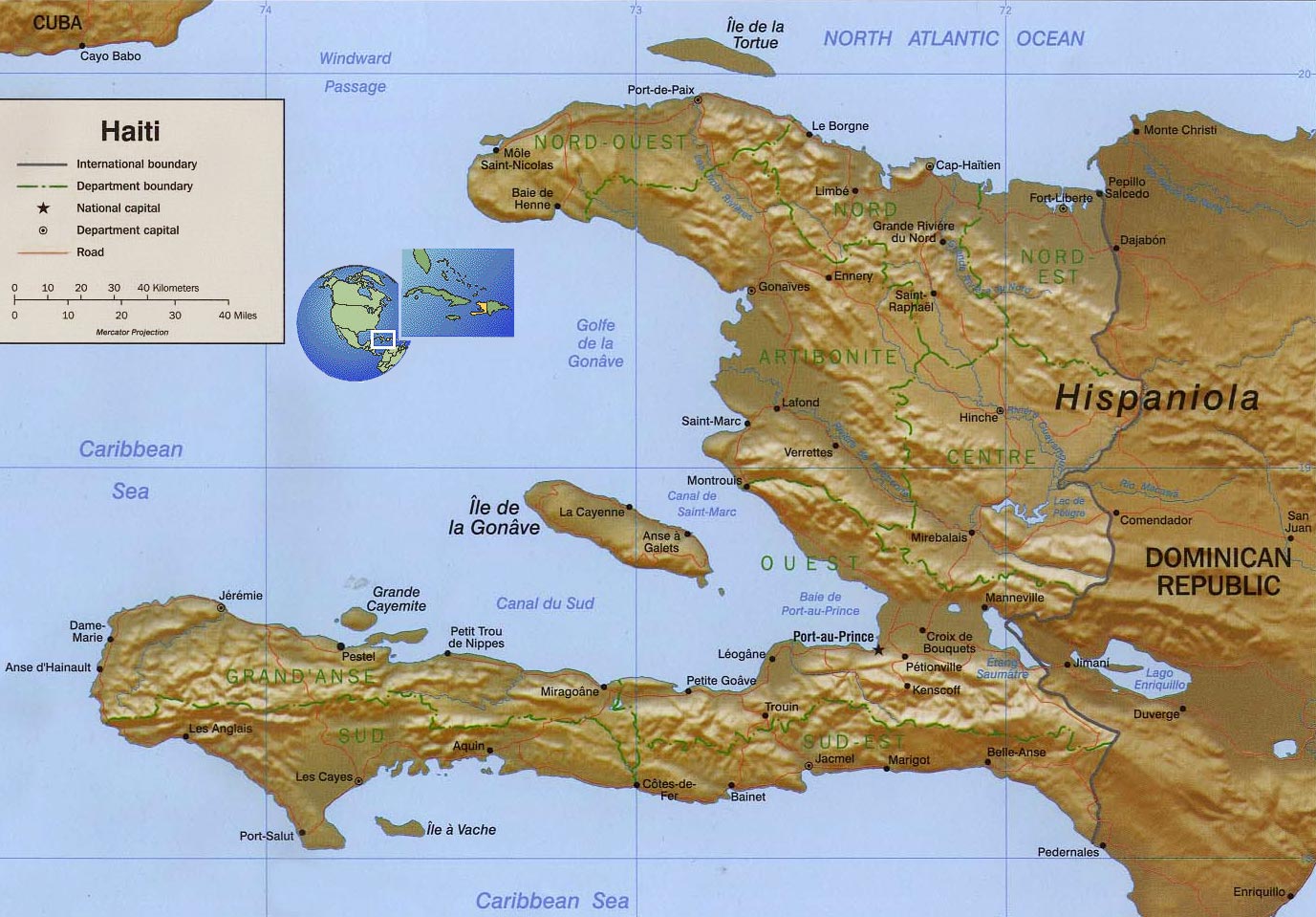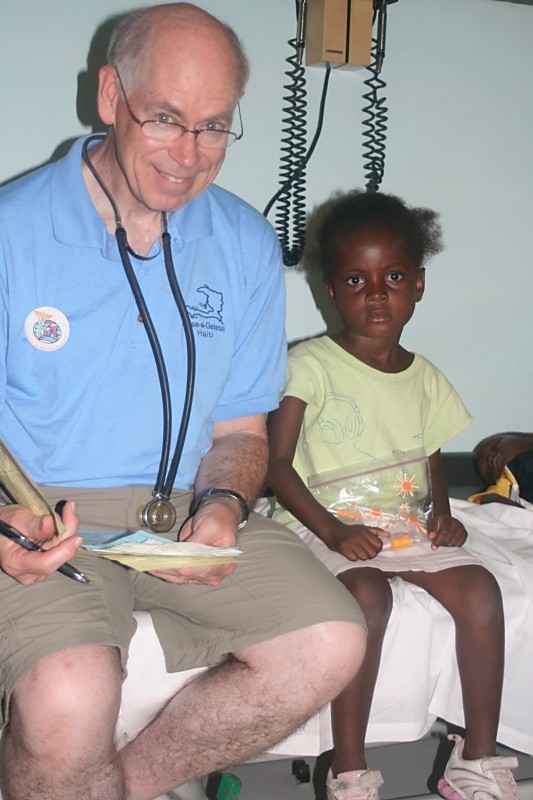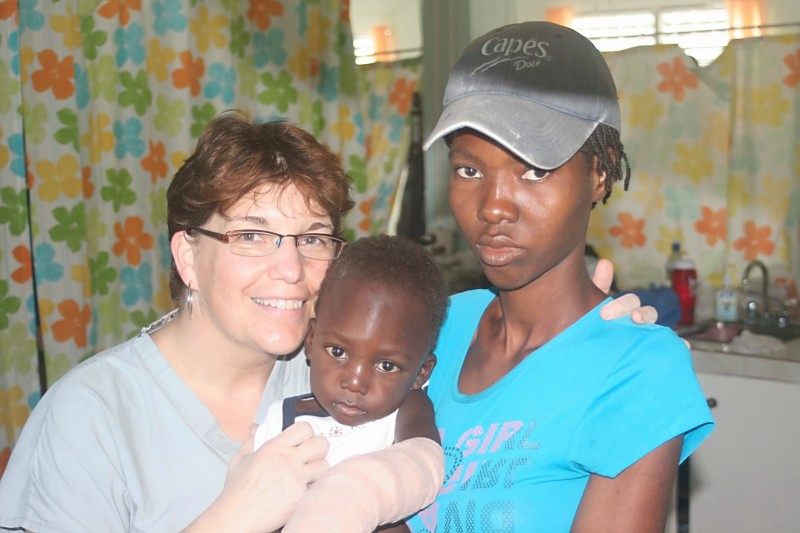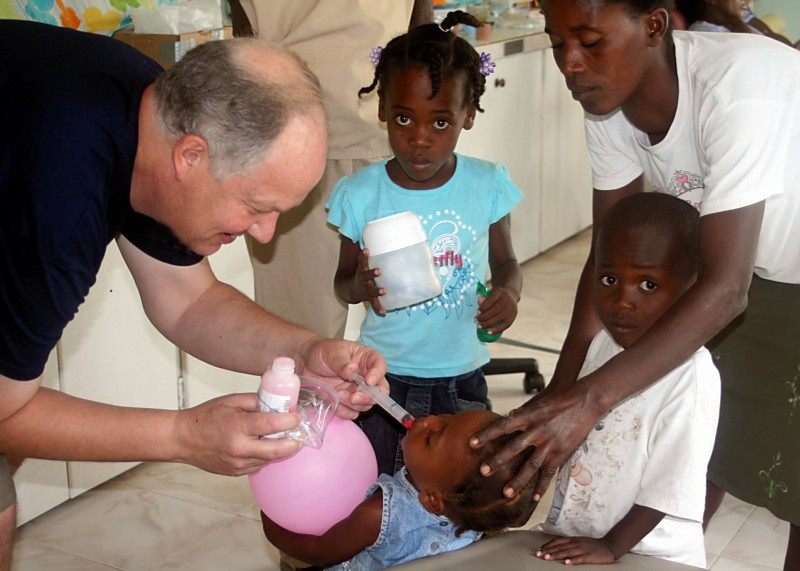
Haiti 5 years later: LaGonave Alive is strong
By Bruce Blumer
January 12 marks the fifth anniversary of the devastating earthquake that struck Haiti in 2010. Bruce Blumer was in Haiti at the time of the earthquake, which originated from an epicenter just 10 miles southwest of the capital, Port-au-Prince. An estimated 3 million people were affected by the quake, more than 2.6 million people were displaced from their homes and more than 200,000 lives were claimed.
fifth anniversary of the devastating earthquake that struck Haiti in 2010. Bruce Blumer was in Haiti at the time of the earthquake, which originated from an epicenter just 10 miles southwest of the capital, Port-au-Prince. An estimated 3 million people were affected by the quake, more than 2.6 million people were displaced from their homes and more than 200,000 lives were claimed.
Photo: A map of Haiti shows Port-au-Prince and the island of LaGonave. File photo.
Bruce Blumer leads LaGonave Live ministry. The ministry has grown since the 2010. Blumer, a member of Embrace Church in Tea, South Dakota, and former Executive Director of the Dakotas United Methodist Foundation, shares his experience and reflections.
What it was like on the ground
January 12, 2010 seems a long time ago and it seems like yesterday. It was a trip that almost didn’t happen. There was a terrible snowstorm and many of the roads across the state were closed. The team of twelve was leaving from Rapid City so my son and I had to drive there by going way north and busting through drifts on secondary roads until the interstate reopened. Then, our flights were cancelled and a wonderful man rearranged our schedules so we could get to Haiti. I remember making it to our site on LaGonave and thinking – it’s going to be a breeze from here.

Photo: Members of the Team included: Jan Speirs, Annie Zwetzig, Paula Hofer, Cathy Nelson, Garry Strauser, Cecile Tays, Debbie Okerson, Carlton Huitt, Jeanne Wyatt, Sarah Baker, Ian Blumer, Bruce Blumer. Submitted by Bruce Blumer.
January 12, 2010 – 4:53pm - I was walking toward our pharmacy and heard this rumble. It sounded like kids running on the stairs, but that couldn’t be. Then it sounded like a train and that surely couldn’t be – there are no trains in Haiti. The ground simple moved and it was disorienting. People ran out to the open field and waited. Some were a bit sick to their stomachs from the movement but we joked, hey, we’ve just been through our first earthquake.
 We went back into the clinic and then there was a major aftershock. No more clinic that day. Luckily one of our doctors, Garry Strusser, got a quick phone call out that we were OK. Because that was the last direct communication we’d have for a several days.
We went back into the clinic and then there was a major aftershock. No more clinic that day. Luckily one of our doctors, Garry Strusser, got a quick phone call out that we were OK. Because that was the last direct communication we’d have for a several days.
Photo: Dr. Garry Strusser assists a young patient in the clinic on the island of LaGonave. Submitted by Bruce Blumer.
We didn’t know what had happened in the capital of Port-au-Prince. We were about 20 miles from the epicenter of the earthquake but LaGonave is very rural. No tall buildings, not as many people. That night of the earthquake, the organizers didn’t want us to sleep in the building so we brought our mattresses into the open field. I remember looking at the hillside and it had looked like it had snowed – because there were several hundred people lying on sheets. They were just too afraid to be inside. There were many aftershocks that night and in the days to come.
On Wednesday we began to hear that this was a catastrophe. In Haiti when people find out about a death, there is a bellowing cry. We heard too many of these over the next few days. That night there was a worship service in the church and the people were singing and praying. A voodoo group came up the path and began drumming and chanting loudly. The church group began praying and singing louder. The drumming/chanting and the praying/singing kept escalating. Without understanding fully, it seemed like – “Whose God is stronger?”
My son, Ian, went into the village about 20 minutes away to try to send email messages. We weren’t in any immediate danger. We had food and water. It just wasn’t clear how we were going to get home. We began to hear more and more that this was bad. We could see boats and planes arrive which, we later found out, were relief assistance.
Photo: Sarah Baker assists patients who arrived at the clinic in LaGonave after the earthquake. Submitted by Bruce Blumer.
 On Thursday we actually started to receive people injured from Port-au-Prince. Now LaGonave is an hour trip north of the city, a boat ride through the bay, and then our clinic was a bumpy 30-45 minute trip up the hill. And the injured had found us--lacerations, a broken hip and broken bones. A woman came to us who had burns from cooking oil. The doctors said she would have been in a burn unit in the U.S. There was a lot of trauma for our little adventure. So we sent word that we were closing our clinic and we hauled all our medicine and supplies to the only hospital on the little island. And we waited.
On Thursday we actually started to receive people injured from Port-au-Prince. Now LaGonave is an hour trip north of the city, a boat ride through the bay, and then our clinic was a bumpy 30-45 minute trip up the hill. And the injured had found us--lacerations, a broken hip and broken bones. A woman came to us who had burns from cooking oil. The doctors said she would have been in a burn unit in the U.S. There was a lot of trauma for our little adventure. So we sent word that we were closing our clinic and we hauled all our medicine and supplies to the only hospital on the little island. And we waited.
Trying to get home
A couple months ago I was cleaning out emails on my home computer and I found a file that my wife had created. It was all the announcements from the Dakotas Conference, the emails people were sending with ideas or ways to get us home, and the prayers. I broke into tears as I was so humbled and so appreciative. I’ve said at no other time in my life had I felt prayers like this time. There was a palpable sense that people were praying for us and for me. This confirmed that so many people cared and were working on our safe return.
It was also so much harder for our families than for us. We saw all these terrible images and for a day or so, we didn’t even know what had happened in Port-au-Prince. My wife, Sharon, later explained when she heard the news of the earthquake and her husband and son were there. Someone had seen my dad walking across DWU campus, looking troubled, and later found out why. These and many more stories like it break our hearts because we were fine; we just had no way to communicate.
The Wesleyan Church has a compound in the main city on LaGonave and they sent a message for me to come. They had a way for us to get off the island. But first they were rescuing 15 youth from the epicenter area and we would combine with our teams and others and find our way home. All of us would travel across the bay in a lobster boat. Most would go north by truck and have a very bumpy, dusty, dirty ride and leave from a cargo plane in the north. The remaining ten of us would go into Port-au-Prince and leave from a private Amway jet that was delivering doctors and medical supplies.

Photo: The earthquake damage in Port-au-Prince. Submitted by Bruce Blumer.
We almost didn’t get into the airport. Lines of people were trying to find a way out of the country. We knew we had a plane from Amway but they wanted to know the tail number and we had no idea what that number was. Finally I asked to see a representative from the U.S. and Officer Rodriguez came in his full army fatigues and automatic weapon. After we offered our explanation, he marched us through the hordes.
The relief effort, even in the early days, was incredible. Supplies had been flown in from around the world – Spain, Canada, Argentina, England, U.S. and so many other places. Logistics were terrible. There is ONE runway in Port-au-Prince, so getting airplanes in and out was a nightmare. There is one main gate for supplies so throngs of people were – of course -- at the gate. I went with the Amway Team leader to show him the gate and I asked a military person what was going on. He said it’s falling apart which meant they were going to close the only gate for supplies to get out. It’s easy to judge the relief efforts, but it was an unbelievably difficult set of circumstances.
In retrospect, we had it so easy compared to our friends and missionaries, Joe and Shirley Edgerton from Kansas had to identify and bring the body of Rev. Sam Dixon back to the U.S. Joe and Shirley were alive because they had made a last minute decision not to go have lunch at the place where Sam and others died.
We had been spared. We were in a rural area with no tall buildings. We didn’t have to deal with broken bodies and lost lives, dust and confusion, and the pain of a magnitude greater than the earthquake.
LaGonave Alive
A few months after the earthquake I was sitting in my car, waiting at a stoplight. A concrete truck came up behind me and the vibration and noise gave me a startle. I remember slapping my hands down on the seat with a moment of panic. I would say that is where many of the people are at in Haiti. The memories are below the surface, but not that far below. Everyone lost a friend, relative and everyone wonders if there will be a next time.
 Photo: Bruce Blumer helps to distribute medicines at the clinic in LaGonave. Submitted by Bruce Blumer.
Photo: Bruce Blumer helps to distribute medicines at the clinic in LaGonave. Submitted by Bruce Blumer.
A year after the earthquake, I went to LaGonave by myself and interviewed elderly people, pastors, and village leaders. The earthquake didn’t damage much on the island, but getting food and supplies became much more difficult as most items come from Port-au-Prince. The aid that came from around the world didn’t make it much outside Port-au-Prince and certainly not much to LaGonave. This trip solidified for me that I can’t change the world, but I can help make small changes in one little corner.
It led to writing a couple small refection books which raised almost $20,000 in funds to help. People wanted to hear the stories and they responded – and continue to respond.
It led us to begin a nonprofit – LaGonave Alive – to work mainly in the areas of:
School Scholarships--People have generously supported about 25 students a year. We have now graduated nurses, a lawyer, technical people and many in elementary and secondary classes.
Health Care--Dr. William Hyppolite is completing medical school in the Dominican Republic. When we have funds we do mobile clinics and sponsor medical teams.
Women, Children, Elderly--We assist women’s groups which protect and nurture children, women and the elderly. One effort, Haiti Children Christmas, has exploded over the past five years. This year 850 children received a toy and meal at Christmas. We have supported orphanages. Our Elderly Food Giveaway currently has 53 people receiving food twice a month and we're working on connecting this to a food packet program.
So how did the earthquake impact me? I started to write more. I know that life is fragile and to try not to waste moments. I know that prayer impacts and connects in ways we don’t understand. I know the love of my family and friends is deep. I know God has opened pathways to get to know, love, and work with kind, generous, funny, needy Haitian people who have given me way more than I’ll ever be able to give back.
Bruce Blumer, LaGonave Alive, 1035 N Spencer Ln, Tea, SD 57064
Checks to Legacy UMC/LaGonave Alive (we will have our 501c3 soon)